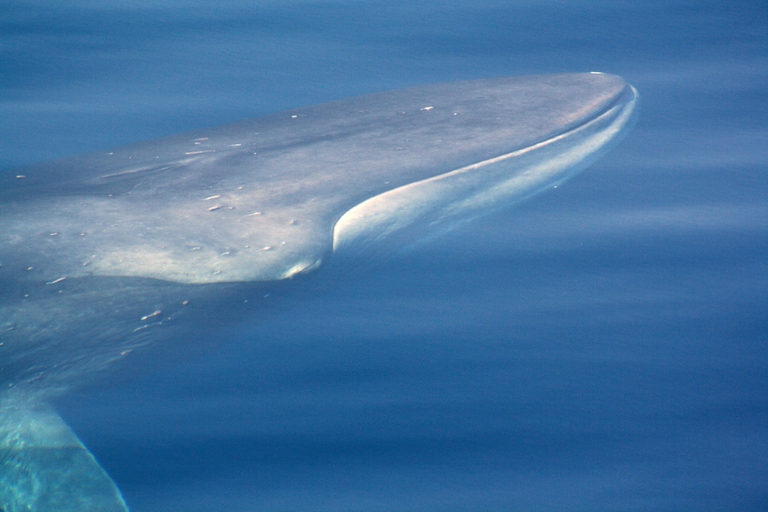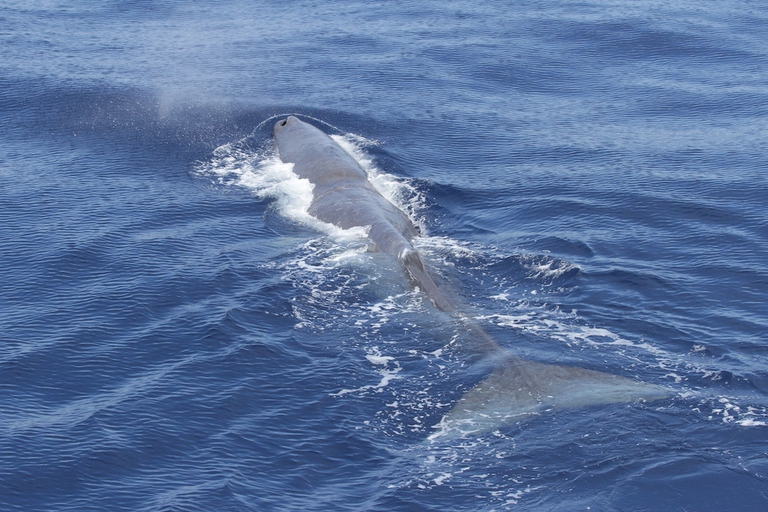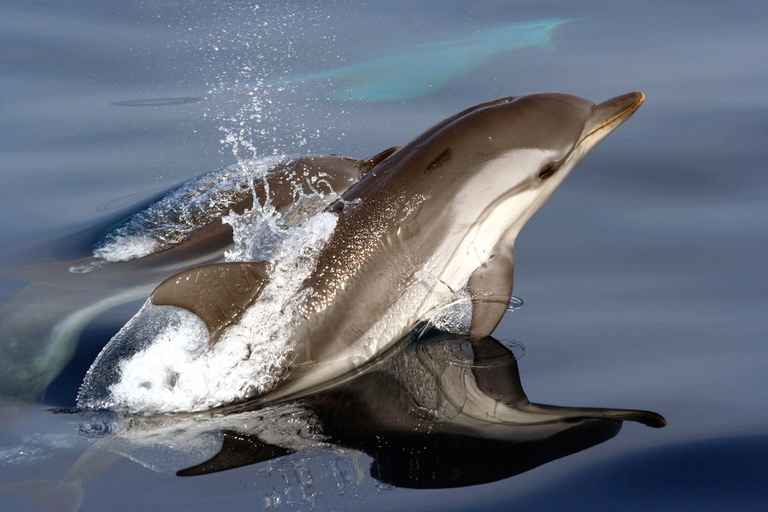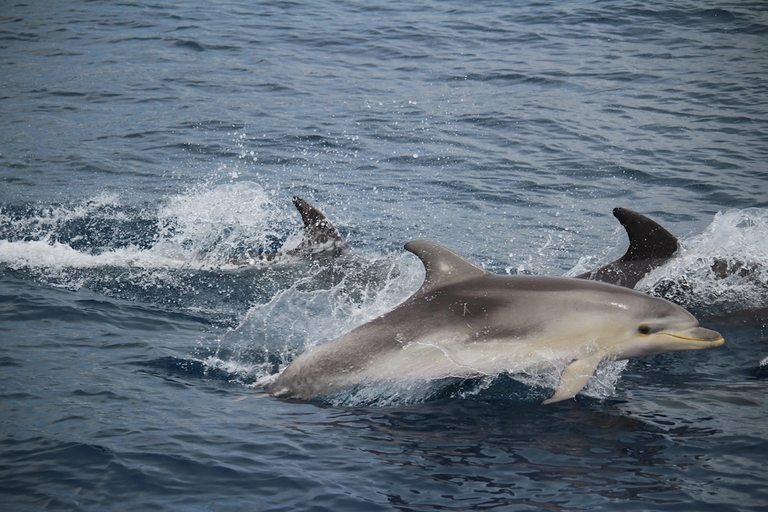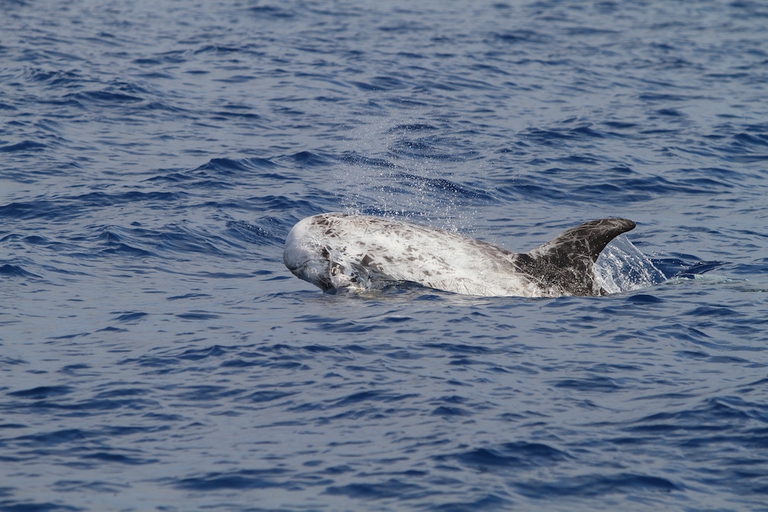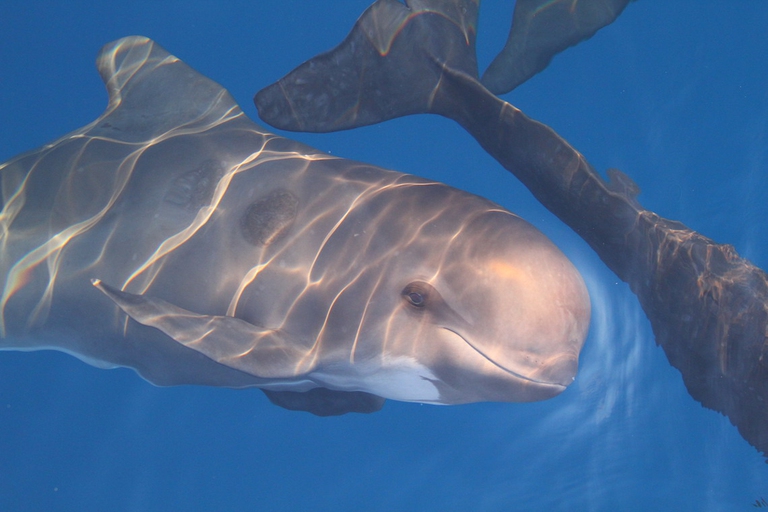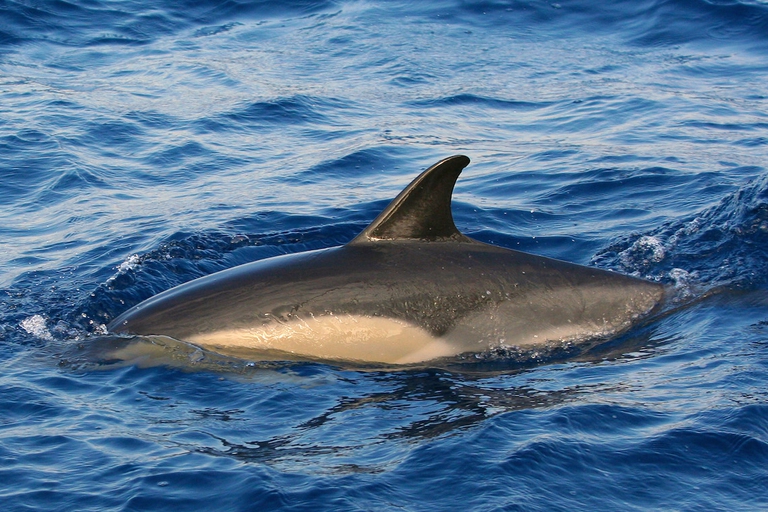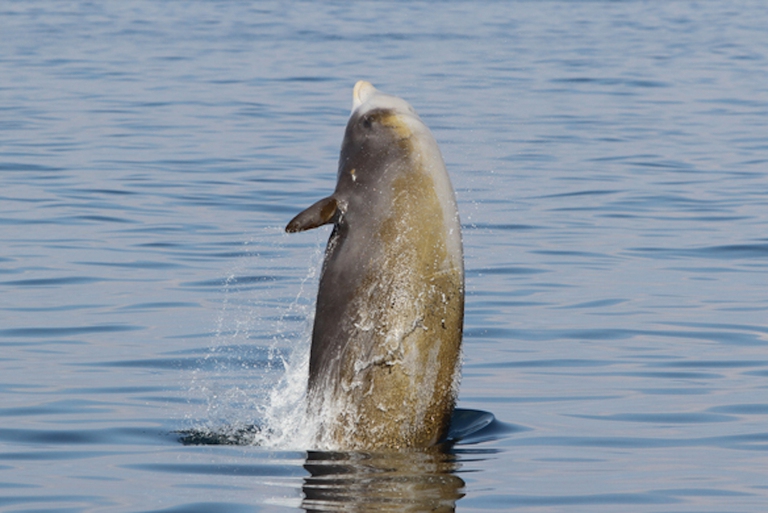
A group of experts in Tokyo suggested pouring radioactive water from Fukushima into the open sea. A marine biochemist explains the consequences of this absurd decision.
“Blow at 2 o’clock!”, shouts a member of the research team onboard the motorsailer Pelagos. For five endless minutes everyone has been scanning the sea in a state of alert silence, looking for a white puff to indicate the blow of a male sperm whale coming to the surface to breathe and rest. The researchers
“Blow at 2 o’clock!”, shouts a member of the research team onboard the motorsailer Pelagos. For five endless minutes everyone has been scanning the sea in a state of alert silence, looking for a white puff to indicate the blow of a male sperm whale coming to the surface to breathe and rest. The researchers tracked this animal for more than forty minutes while he was hunting deep underwater, following the impulsive sounds (or clicks) that he uses as sonar to look for squids in the dark.
The sighting breaks the stillness and the boat immediately explodes in a frenzy of activity. Everyone has their role: taking a picture of the whale’s fluke, its tail, to establish his identity, logging his breathing pattern, taking notes on behaviour, recording vocalisations. The large whale is mostly still in the water while these data are collected non-invasively. At each powerful blow everyone onboard is in awe. After fifteen minutes or so, he gives a couple of fluke strokes, arches his back, lifts his fluke out of the water (a brief chance to discover his identity), and off he goes, back to feeding in the deep sea.
Welcome to a typical day onboard one of the research cruises that, throughout the summer, Tethys Research Institute carries out in the Ligurian Sea. Members of the public have the unique opportunity of taking part in the everyday life of marine researchers as eco-volunteers. By doing so, they provide precious support for the activities of this NGO, which has been one of the leaders in the research and conservation of cetaceans in Italy and the Mediterranean Sea for the past thirty years.
Sperm whales are only one of the eight species that can be regularly encountered in this enclosed basin. Some of them are better known than others, but, when genetic data are available, these suggest that the populations inhabiting the Mediterranean are distinct from their neighbours in the adjacent North-Atlantic. The Mediterranean Sea is characterised by high biological diversity and endemism (meaning that many species are present only here). However, it is also one of the marine regions with the highest levels of ship traffic, pollution, human density, tourism and fishing in the entire world. The survival of its isolated cetacean populations is therefore threatened on many fronts and coordinated basin-wide conservation actions are urgently required. These are the eight cetaceans regularly occurring in the Mediterranean.
With its length in excess of 20 metres, the fin whale is the second largest animal that has ever lived on our planet (the largest is the blue whale). Fin whales migrate to the Ligurian Sea in the summer to feed on large quantities of the krill that become available in this area, which constitutes the so-called Pelagos Sanctuary. This is an area of 87,500 square kilometres subject to an agreement between Italy, Monaco and France for the protection of marine mammals.
As the largest diver of the oceans, this animal can hunt squids at depths of more than 2,000 meters, holding its breath while scanning the environment with its powerful sonar system. In the Atlantic, social groups of females and calves remain at low latitudes while the males migrate to the poles to feed, but movements and social dynamics are still unclear in the Mediterranean.
This small dolphin is the most commonly encountered species in the basin. It generally occurs in large groups and, in summer, calves can often be observed.
Bottlenose dolphins are one of the most iconic dolphin species in the world. In the Mediterranean, they inhabit the coastal waters of most countries, although an offshore form also exists.
Many white scars resulting from social interactions accumulate on the body of these large dolphins. A complex social structure and a tendency to elude interactions with boats contribute to our poor understanding of the ecology of these animals in the Mediterranean.
Long, slow moving and shiny black, this highly social species appears deceptively quiet at the surface. In reality, pilot whales are skilled deep-diving hunters, an ability that has earned them the name of cheetas of the deep.
Despite its name, this dolphin species has suffered a dramatic decline in the Mediterranean. Overfishing and habitat degradation have contributed to make this animal a rare sight in Mediterranean waters, where nowadays it is often encountered mixed in with larger groups of striped dolphins.
Possibly the most enigmatic of the eight species, Cuvier’s beaked whales are large, have a colourful pigmentation, a pair of protruding teeth (in the males) and record-breaking diving abilities. This species is unfortunately famous for its sensitivity to man-made sources of noise (particularly military sonars), which are believed to be the cause of several mass strandings that have occurred in the past few decades.
Siamo anche su WhatsApp. Segui il canale ufficiale LifeGate per restare aggiornata, aggiornato sulle ultime notizie e sulle nostre attività.
![]()
Quest'opera è distribuita con Licenza Creative Commons Attribuzione - Non commerciale - Non opere derivate 4.0 Internazionale.
A group of experts in Tokyo suggested pouring radioactive water from Fukushima into the open sea. A marine biochemist explains the consequences of this absurd decision.
The decline in grey and humpback whales in the Pacific and Atlantic Oceans has been traced to food shortages caused by rising ocean temperatures.
The United Nations has launched a major international alliance for ocean science, undertaking a mission close to all our hearts.
The cargo ship that ran aground off the coast of Mauritius on 25 July, causing incalculable damage, has split in two and its captain has been arrested.
The largest coral reef in the world is severely threatened by climate change, but researchers are developing strategies that could contribute to saving the Great Barrier Reef.
Seychelles have extended its marine protected area, which now covers over 400,000 square kilometres, an area larger than Germany.
Norwegian oil giant Equinor had pulled out of drilling for oil in the Great Australian Bight, one of the country’s most uncontaminated areas. A victory for activists and surfers who are now campaigning for the area to be protected forever.
30 per cent of the planet needs to be protected to stop precipitous species decline. The UN has set out its aims for the the COP15 on biodiversity scheduled for Kunming, China in October.
Ocean warming has risen to record highs over the last five years: just in 2019 the heat released into the world’s oceans was equivalent to that of 5-6 atomic bombs per second. The culprit, no doubt, is climate change.
